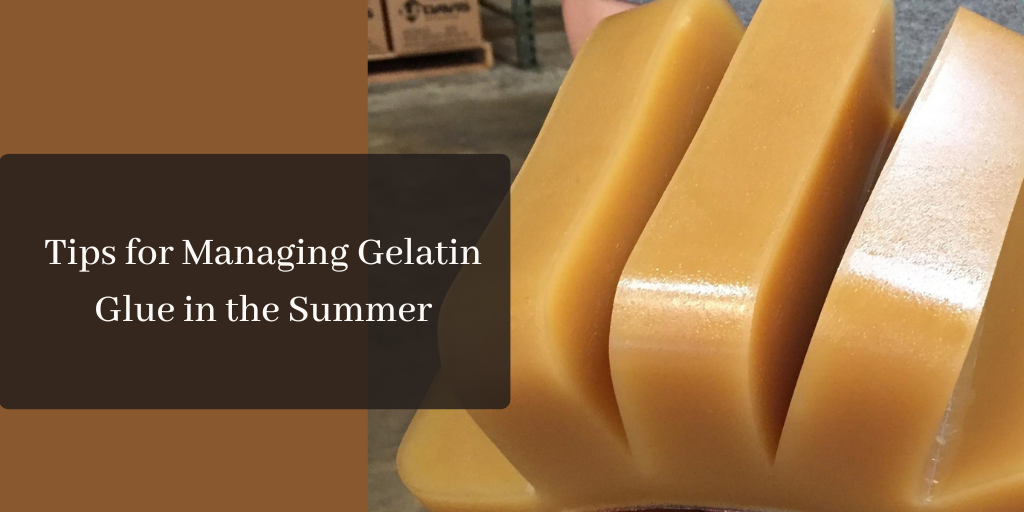Summertime is here! While the weather is beautiful, the additional heat and humidity can create manufacturing challenges. If you’re working with gelatin glue, you have likely noticed the consistency of the adhesive changing during the warmer months.
Here are our top tips for optimal use of your gelatin glue during the summer.
Understanding Gelatin Adhesives
Gelatin adhesives, also known as hide glue or animal glue, are water-based adhesives made from gelatin, Epsom salts, sugars, water, and glycerin. These glues are commonly used for bookbinding and packaging applications; they are both biodegradable and environmentally friendly. However, summer can be challenging for these adhesives due to increased heat and humidity, which can affect their performance.
Summer Challenges
During summer, higher temperatures and humidity can significantly impact gelatin glue's tack time and other properties. As the temperature rises, the glue takes longer to set, which can slow down the application process.
4 Tips for Using Gelatin Glue in the Summer
To ensure smooth procedures during the hot months, try these tips:
- Control the Environment: Adjust the environment where the glue is applied to minimize excess heat and humidity. Closing doorways and windows and utilizing HVAC can help.
- Adjust Glue Temperature: Typically, gelatin glue should be heated to 140-150 degrees Fahrenheit. Running it at the lower end of this range (140 degrees) can help increase tack time in summer.
- Reduce Water Content: When humidity is high, less water is needed to dilute the glue for application.
- Apply Less Glue: Applying a thinner layer of glue can help it dry faster. While it might seem counterintuitive to use less product, it ensures better performance during the summer.
Additional Adhesive Troubleshooting
If adjusting the temperature, water content, and amount of glue doesn't resolve the issue, consider these options:
- Rapid Tack Additive: This product can be added to gelatin adhesives to improve performance in hot, humid conditions.
- Alternative Products: Explore other LD Davis products that better suit your needs during summer.
Following these tips and tricks, you can maintain efficient and effective processes even during the year's hottest months. Let us know if you have questions or need help with your application.







